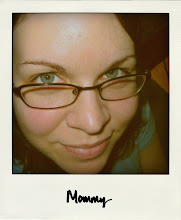**NOTE: PLEASE SCROLL DOWN BELOW TO NEXT POST TO VIEW VIDEO.The TIFLE project
The video we created is based on a series of very popular videos that have recently been appearing on video sharing sites such as YouTube. These videos are typically called “50 Things” and consist of the author reciting a list of 50 things that he has done over the course of his life. Since the subject matter (i.e. the “50 Things” video) is current and most likely familiar to many of our students, we chose to use it as the basis of our project, and considering the fact that it would allow us to expose the students to a large number of single sentences in the past tense, we chose the preterit/imperfect distinction for our pedagogical focus. In regards to the composition of the video itself, we wanted to create the least possible amount of visual distraction so that the students would be primarily focused on the words we were saying, so we chose a simple white backdrop with a heavy focus on our faces.
Although we originally had planned to create a more sophisticated video, we opted instead to create a more casual video that would be similar in style and composition to the other videos that are appearing on YouTube. We also hoped that the casual atmosphere would allow the students to more easily relate to the video. We spent a fair amount of time deciding on background music, since we did not want to include anything that would distract the students from the oral input, and we finally decided on an upbeat and catchy tune that we rendered voiceless using the audio program
Audacity.
The activityThis video-based activity is designed for a beginning level Spanish class (equivalent of SPN1131 at the University of Florida) and the pedagogical goal of the activity is to offer the student comprehensible input on the uses of preterit and imperfect tenses, as well as to create a forum within which they can later produce these forms when they make their own video. Since the project is intended to reinforce the distinction between the preterit and imperfect tenses in Spanish, it should be delivered to the students immediately following explicit instruction regarding this particular grammar topic. The activity will be delivered and completed in the three stages listed below.
In the first stage of the activity, which should be completed immediately following explicit instruction, students will view the video in class two times in a row. During the first viewing, they will simply watch the video without taking notes or making any comments. During the second viewing, immediately following the first viewing, the students will be asked to complete a cloze activity in which they will complete the sentences that we are using in the video (worksheet can be accessed
here). The blanks will only contain the verbs, and will be intended to enhance the spoken input and force the students to focus on the grammatical forms of the preterit and the imperfect. Once the video is completed, the instructor should review answers with the students to ensure comprehension.
The second stage of the activity involves an in-class writing activity in which the students will work in groups of three to write out their own list of fifty things that they have done in their lives. It should be noted that the group will collaborate to create ONE list of 50 things, not three separate lists. This list will be turned in at the end of class period for the instructor to revise and return to the students, hopefully creating a final draft using the correct grammar. After receiving their revised script from the instructor, the students will move on to the third stage of the project.
In this third and final stage, the students will film and edit their own “50 Cosas” video at home in their same groups of three, using the revised scripts from the instructor. The students will be given one full week to complete the activity and upload their video to YouTube. This project will also make use of the social networking features of YouTube by requiring the students to all use the same tag when the upload their video (“SPN1131_50Cosas”, for example). This will allow the videos to all be easily searchable, as well as allowing the students to easily find each other’s videos. The students will also be required to send a direct link to their video to the instructor for assessment.
The theoretical justificationThe pedagogical facet of this activity can be justified by means of the theory of Constructivism, which Hansen-Smith (2003) notes emphasizes “learning by doing and creating meanings, particularly by using the tools of the computer”. Since the students will be intimately involved in the creation of both a video focused on the preterit/imperfect distinction, as well as a script for that video, it is hoped that they will benefit linguistically through the opportunity to construct and take responsibility for their own language learning experience. Likewise, it is expected that the distinction between the two tenses will become more personal and notable to the students since the main topic of the video is their own intimate experience in life.
In regards to SLA theory, the activity is deeply connected to the concepts of noticing and awareness, as introduced by Schmidt’s Noticing Hypothesis (1990), which contends that input can only be processed in the long term memory once the learner is aware of the input, and learning, within this construct, cannot occur without noticing. The cloze activities in particular are intended to direct the students’ attention towards the forms in questions and enhance the input, while hopefully increasing the chances that the students will notice the forms and therefore convert their input into intake.
ReferencesHanson-Smith, E. (2003). A brief history of CALL theory. The CATESOL Journal 15, 21-30.
